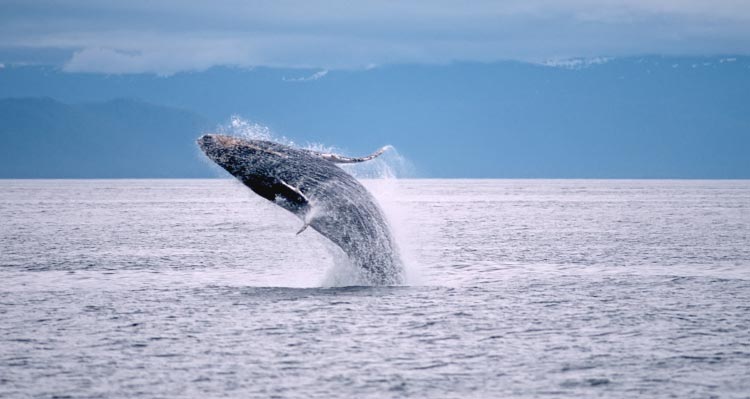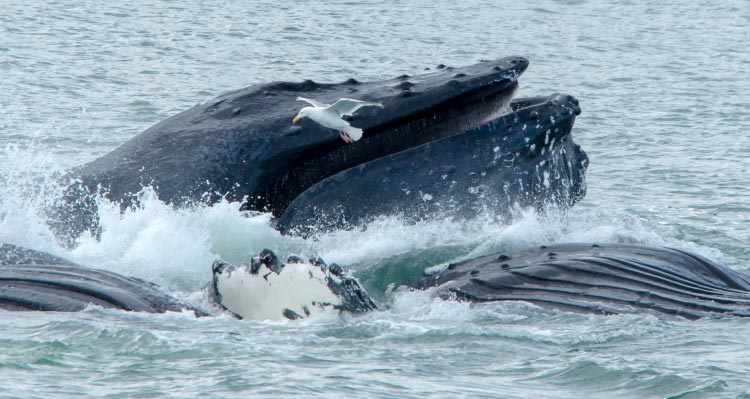Whale watching can be an exercise in patience. It's sometimes slow, often a guessing game, even for Kenai Fjords Tours captains who have spent a lifetime combing these waters. Where are the whales? Where will they come back up to the surface? How will they come up?
But then, in an instant, it becomes an enormous rush of adrenaline.
When a bubble-net (or cooperative feeding, as some call it) feeding happens, it's a flurry of activity. A group of humpback whales gather at the surface to feed. Each summer, usually in late June, our tours witness bubble net feeding in Resurrection Bay.

Humpback whales often travel in groups. During the summers spent along the coast of Alaska, they're all about bulking up. Humpbacks only eat during half of the year—the summer half that they spend here (the rest of the year they are focused on breeding). Eating as much as they can, and doing so around the clock, a humpback can consume up to 3,000 lbs of fish a day.
Sometimes, they swim in a shrinking circle, blowing bubbles as they go, and together, they are able to force fish upward. It's like a trap—fish aren't able to get out of the bubbles. The way the whales exhale the bubbles also creates a loud and intense sound that also helps with the process—fish can't handle the noise! Teamwork makes for an easier meal, you could say. It's an incredible example of cooperation that scientists say is learned.
Bubble-net feeding is a complicated, highly synchronized effort that shows high biological intelligence. One whale usually leads the endeavor, diving deep then rising up to the surface. From deep below, it'll begin to blow air to create bubbles. It confuses and traps the fish above. Then, the rest of the team follows, creating a cumulative fence around the prey, like a corral. The whales then gather inside the bubble-net and rise to the surface, mouths wide open.

It's a sweet, beautiful and thrilling sight.
See it for yourself this summer in Kenai Fjords!
Insider tips, inspiration and deals — delivered straight to your inbox.